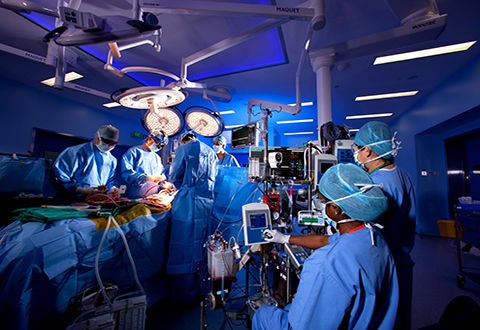SingHealth Institutions will NEVER ask you to transfer money over a call. If in doubt, call the 24/7 ScamShield helpline at 1799, or visit the ScamShield website at www.scamshield.gov.sg.

It was a terrifying series of stop-start events. One minute he was taking a trainer's course and the next thing he knew, he was in hospital.
There someone asked him to sign a consent form for an emergency operation. He blacked out soon after and woke up to find himself in the intensive care unit.
Said Mr Lee Yam, 63: "I didn't know what happened."
Doctors had stopped his blood circulation for 45 minutes in order to operate on him.
Mr Lee is a lucky man. He suffered a potentially fatal condition known as the dissecting aorta (blood vessel).
Mr Lee said: "I didn't even know what the condition was. Suddenly, I saw all these people, my friends and family, in my room and I asked them why they were there. They said, don't you know, you've just had a major operation?"
RECOVERY
That was at the end of May. He survived the complex operation and is now on the road to recovery.
Said Mr Lee, a corporate trainer: "This has come as a complete surprise to me. I don't smoke, don't drink and have been playing tennis twice a week for 40 years. I also swim often. I was fit and never had any health problems." Until this.
Dr Lim Chong Hee, senior consultant at the Department of Cardiothoracic Surgery and director of the Heart and Lung Transplant programme at the National Heart Centre (NHC), believes that among the spate of sudden deaths of apparently fit young men that have been reported in the papers recently, a few might well have been due to this condition.
"Unless a post-mortem is done, we will never know. But it is likely that this condition may have been a factor in some of those deaths," said Dr Lim. Mr Lee's problems started when his aorta started to split.
The aorta is composed of three layers. Aortic dissections occur when the layers separate the way plywood separates if left out in the rain.
Said Dr Lim: "When dissections occur, patients typically experience severe pain in the chest or back, which may be described as a stabbing pain, like when someone drags a knife across your back from the top down."
DIAGNOSIS
This most frequently sends patients to the emergency room where the diagnosis is made.
Nine in 10 patients get such symptoms. But one in 10 patients do not get any signs or symptoms at all, and this can be dangerous as they would not know that they need medical help.
Dissections may involve the ascending aorta, the descending thoracic and abdominal aorta, or the entire aorta.
The risk of death depends on the extent of the dissection. It is highest for those involving the ascending aorta, the part of the blood vessel that goes up, said Dr Lim.
STOPPING CIRCULATION
In Mr Lee's case, it was a matter of time before it ruptured.
Once the ascending aorta ruptures, the patient no longer feels any pain because his blood pressure would suddenly drop to 0.
"You can die in minutes," said Dr Lim.
Repairing the ascending aorta is no easy task. That part of the blood vessel leads directly to the brain. Any injury or sudden bleeding can cause the patient to suffer a stroke. Mr Lee's entire body had to be cooled down to about 18 deg C to protect the brain and other organs. Doctors did this by passing the blood through a heat exchanger.
Once that was done, Dr Lim stopped the blood circulation. At that temperature, doctors have about an hour to do what they need to do before brain damage sets in. What they need to do is to repair the part of the aorta that is damaged. This involves removing the affected portion of the aorta and replacing it with a graft made of Dacron, a synthetic material. Surgeons work fast to get this done.
Dr Lim said he tries to stop the circulation for only about 45 minutes.
"There are many factors to consider in stopping the patient's circulation such as brain and kidney damage, so we want it to be as safe as possible for the patient," said Dr Lim.
SIX-HOUR OPERATION
Mr Lee's operation took six hours to complete, including the time it took to cool him down and warm him up again.
Every year, surgeons at NHC operate on patients with this condition.
There were six cases last year and 13 in 2005.
"This year, we have done four cases," said Dr Lim.
The operation usually costs more than $25,000. The success rate at the NHC is over 90 per cent.
Those at risk from this condition include people with high blood pressure and who have Marfan syndrome – a connective tissue disorder.
Connective tissue provides substance and support to tendons, ligaments, blood vessel walls, cartilage, heart valves and many other body structures.
In those with Marfan syndrome, many of these structures aren’t as stiff as they should be.
Dissecting aorta also tends to affect twice as many men as women.
Those who are more than 50 years old are more at risk.
Said Dr Lim Chong Hee of the National Heart Centre: “Those with high blood pressure should be closely monitored.”
The New Paper © Singapore
Press Holdings Limited. Permission required for reproduction.
Keep Healthy With
© 2025 SingHealth Group. All Rights Reserved.



















